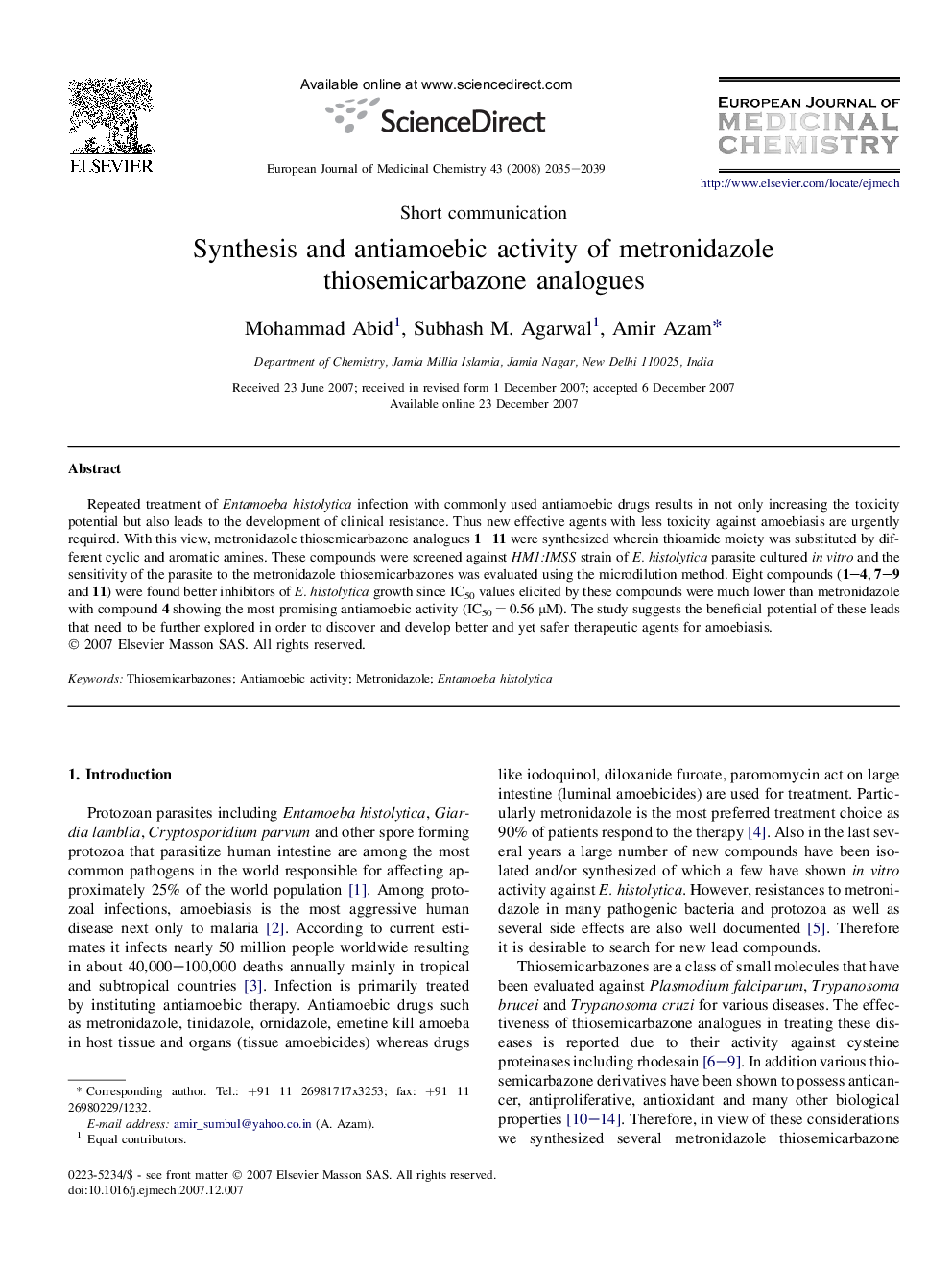| Article ID | Journal | Published Year | Pages | File Type |
|---|---|---|---|---|
| 1393416 | European Journal of Medicinal Chemistry | 2008 | 5 Pages |
Repeated treatment of Entamoeba histolytica infection with commonly used antiamoebic drugs results in not only increasing the toxicity potential but also leads to the development of clinical resistance. Thus new effective agents with less toxicity against amoebiasis are urgently required. With this view, metronidazole thiosemicarbazone analogues 1–11 were synthesized wherein thioamide moiety was substituted by different cyclic and aromatic amines. These compounds were screened against HM1:IMSS strain of E. histolytica parasite cultured in vitro and the sensitivity of the parasite to the metronidazole thiosemicarbazones was evaluated using the microdilution method. Eight compounds (1–4, 7–9 and 11) were found better inhibitors of E. histolytica growth since IC50 values elicited by these compounds were much lower than metronidazole with compound 4 showing the most promising antiamoebic activity (IC50 = 0.56 μM). The study suggests the beneficial potential of these leads that need to be further explored in order to discover and develop better and yet safer therapeutic agents for amoebiasis.
Graphical abstractEleven N4-substituted thiosemicarbazone analogues of metronidazole were synthesized and evaluated for their antiamoebic activity by the microdilution method against HM1:1MSS strain of Entamoeba histolytica. As many as eight (1–4, 7–9 and 11) out of eleven compounds were found better inhibitors of E. histolytica growth and compound 4 showed the most promising antiamoebic activity.Figure optionsDownload full-size imageDownload as PowerPoint slide
